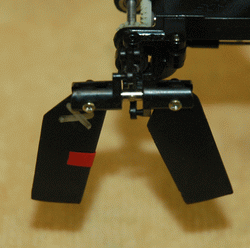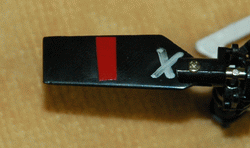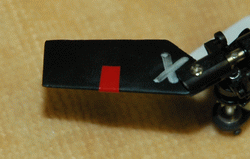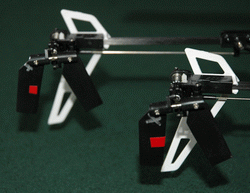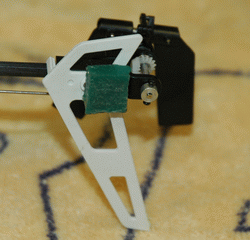Blade 130X Tail Vibration Fix
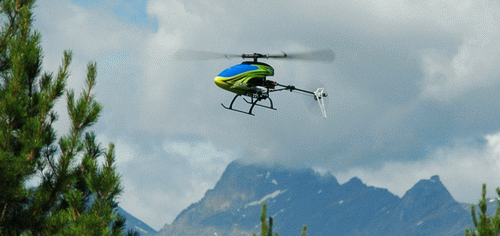
While spooling up, a good number of people are reporting 130X tail vibration issues. As I said in my 130X review, I have experienced this as well on my 130X. To be honest, I never really thought it was an issue since it was so short lived and by the time the rotors were up to flight speed, it was gone (mine phased in at about 17% throttle and was gone by 25% throttle).
I also had over a hundred flights on my 130X before doing anything about it and it was working fine the entire time. Plus the fact most of my helis will have one or two tail resonances during spool up (not nearly as strong as the 130's mind you) pretty much made me insensitive to the problem. I guess that was Horizon's stance as well from the feedback I was getting.
Anyways, it wasn't until I was contacted by a few people with vibration questions and also heard hobby shops were having a fair number of 130X returns due to excessive 130X tail vibrations that I started to take this problem a little more seriously and started playing around with possible fixes. I honestly didn't have time for this, but I was getting rather annoyed by all this negativity over such a great little micro heli. Yes, at the end of the day this is still a low cost, micro size heli, so really how much should we expect? As it turns out, more than I thought...
Identifying The 130X Tail Vibration
Before getting into the fix, I thought I should go over the vibration characteristics, how to identify them, and what damage they can actually do.
The 130X's visible tail vibration is transitional in nature; by that I mean it's not there all the time (or at least it's not visible all the time). The visual vibration we actually see is a resonance vibration that builds in amplitude at a very specific tail RPM/frequency. Essentially what happens is at a certain tail RPM, the tail vibration frequency matches the natural frequency of the tail boom along it's length wise axis and at that point, the tail boom will resonate/oscillate along its torsional axis. If you look at the 130X's tail case block end on while it's resonating, you will see the entire tail case and tail shaft oscillating up and down in a twisting blur/buzz along the torsional axis of the boom when the resonance peaks.
So why does it do this? From my experience and others, it's a simple tail rotor blade imbalance issue. Basically the vibration is there all the time, but only at that specific frequency does it set up the harmonic resonance in the tail boom, and then it's hard to miss or ignore. I have read some reports this is caused by tail shaft hubs that are not aligned correctly on the shaft, but I have yet to see it first hand. Still, it's something to check for first since the best balancing job will be meaningless if the hub is not sitting at a right angle to the shaft.
I have also heard people saying the stock tail bearings are garbage, but again, is that factual evidence from actual bearing failures, or is the excessive resonance if allowed to occur for extended periods taking out the tail bearings prematurely? Like I mentioned, I had over a hundred flights on my 130X with not much bearing play increase at all because I quickly ran through the resonance every time I spooled up. That said, even if you run through that harmonic resonance quickly, the underlying tail blade imbalance and short lived resonance each time you spool up will certainly cause premature bearing failure over time.
There are better bearings available - no question there, but even higher end bearings will fail faster if the blade imbalance is not corrected first. In fact, when I replaced the tail shaft bearings with better ones before balancing the tail blades, the resonance got even worse (higher in amplitude) due to the fact the little bit of slop that had developed in the stock bearings was absorbing some of the vibration energy so it couldn't build in amplitude as strongly as it could with the new bearings that had next to no slop.
Here is what the tail vibration will look and sound like as it phases in and out of resonance (poor little tail bearings).

